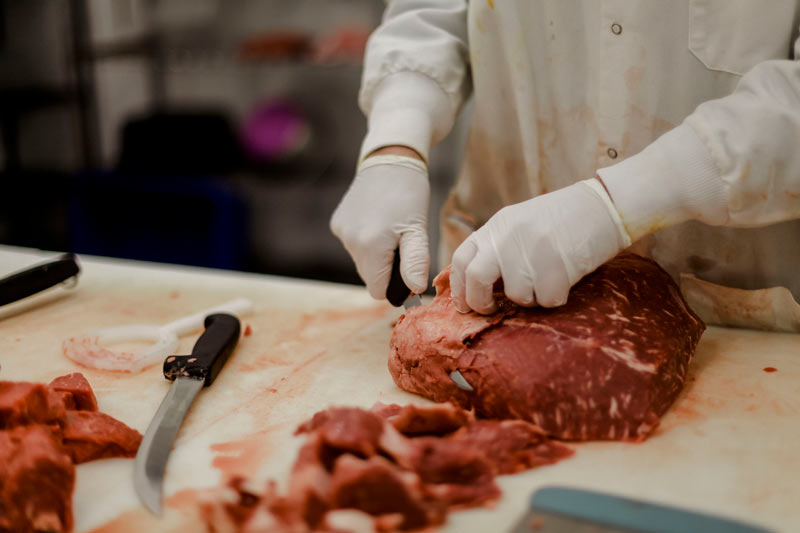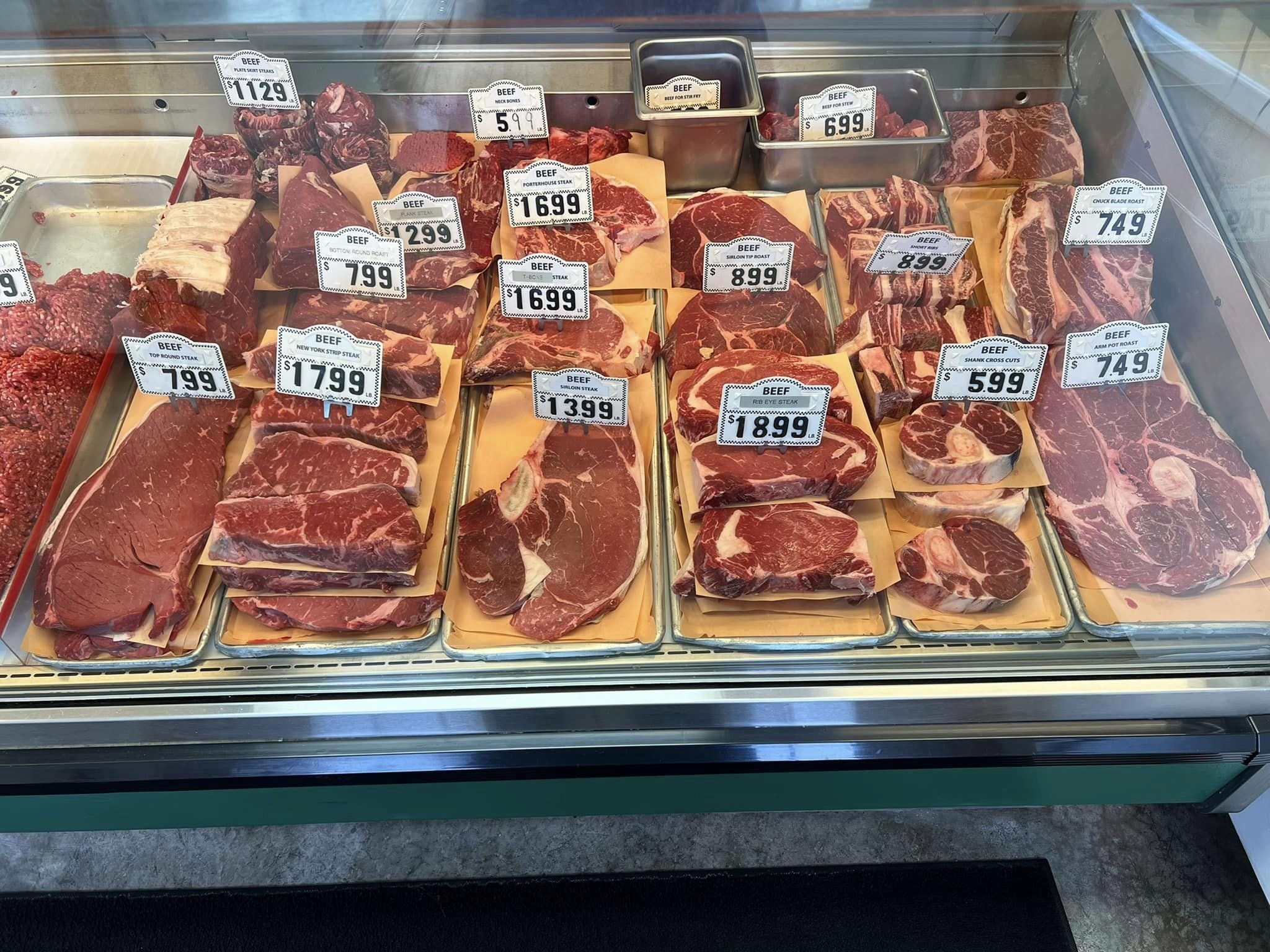Get fresh and local meats from Bagley Meat Market Edwardsville IL for your meal.
Get fresh and local meats from Bagley Meat Market Edwardsville IL for your meal.
Blog Article
Just How to Select the Perfect Cut of Meat From a Trusted Meat Market
Selecting the excellent cut of meat from a trusted meat market calls for a thoughtful method that stabilizes quality, cooking purpose, and budget. Understanding the different sorts of meat and their particular cuts is essential, as is engaging with your butcher to obtain insights right into sourcing and preparation. Observing features such as color, structure, and marbling can further assist your decision. As you consider these elements, it comes to be clear that the nuances of your option can significantly influence the end result of your meal, triggering a much deeper expedition of the criteria that genuinely issue.
Recognizing Meat Cuts


As an example, the tenderloin is treasured for its buttery structure and minimal connective cells, making it perfect for fast cooking approaches such as cooking or pan-searing. In contrast, tougher cuts like the brisket or shank take advantage of slow food preparation techniques to break down collagen, producing rich and tasty outcomes.
Additionally, the fat material of a cut plays a vital duty in taste profile and dampness retention during food preparation. Cuts with higher fat material, such as ribeye, use an even more durable taste, while leaner options, like sirloin, might call for cautious preparation to avoid dryness (bagley meat market edwardsville il). Comprehending these subtleties enables educated choices that elevate cooking creations, making certain that each recipe showcases the most effective qualities of the picked meat
Factors to Take Into Consideration
When choosing the ideal cut of meat, numerous important aspects come right into play that can substantially affect the last recipe. Firstly, take into consideration the type of meat you want-- beef, pork, lamb, or chicken-- as each deals unique tastes and textures. The details cut within that category is similarly important; for example, ribeye delivers abundant marbling, while tenderloin supplies a lean, buttery texture.
An additional element is the food preparation technique you prepare to use. Cuts appropriate for barbecuing, such as T-bones or sirloins, vary from those far better matched for sluggish cooking, like chuck roasts or shanks. Additionally, quality is paramount; constantly select meat with a vibrant shade and company texture, indicating top quality and appropriate handling.
Premium cuts might use extraordinary taste, however there are also cost-efficient options that, when prepared appropriately, can generate scrumptious results. Stabilizing these elements will certainly aid you select the ideal cut for your cooking requirements.
Inquiries to Ask Your Butcher
A butcher's expertise can be vital when picking the optimal cut of meat for your culinary endeavors. Begin by making inquiries about the source of the meat.
Following, ask concerning the different cuts available for the type of meat you choose. An educated butcher will certainly discuss the subtleties of each cut, assisting you pick one that matches your cooking method and preferred result. Do not hesitate to ask about the most effective food preparation strategies for a specific cut; butchers often have ideas that can boost your recipe.
It's additionally sensible to inquire about the meat's quality. Inquire regarding the distribution routine and how often the meat is replenished. This will offer you confidence in the high quality of what you are buying. Lastly, request for recommendations based on your individual taste choices. An excellent butcher will be eager to share their know-how and suggest cuts that will certainly delight your taste. Engaging your butcher with these questions can considerably boost your meat option experience.
Recognizing Quality Meat

Structure is one more important aspect; quality meat should feel solid and somewhat bouncy to the touch. Avoid any cuts that really feel slimy or exceedingly completely dry, as these can indicate putridity or inappropriate storage. Furthermore, odor plays an essential duty; fresh meat must have a clean, neutral scent, while any type of repulsive or sour odors are warnings.
Finally, take into consideration the source. Purchasing from a reputable meat market, where the meat's beginning is known, can make sure better criteria. By concentrating on these indicators-- color, marbling, structure, odor, and source-- you can confidently select cuts that will elevate your cooking and eating experience.
Cooking Methods for Each Cut
Selecting the best cooking technique is critical for making best use of the taste and tenderness of each cut of meat. Different cuts possess special features that dictate the most suitable food preparation strategies.
For tender cuts, such as filet mignon or ribeye, dry warm methods like cooking, broiling, or pan-searing are excellent. These strategies enhance the natural tastes while making sure a juicy, delicious appearance. On the other hand, tougher cuts, such as chuck or brisket, gain from damp heat approaches, consisting of braising or slow cooking. These methods help break down connective cells, leading to a tender, tasty dish.
Pork chops and poultry breasts are functional and can be cooked utilizing both dry and damp techniques. go to my blog While grilling or roasting can generate tasty outcomes, poaching or sautéing can keep dampness and inflammation. For lamb, techniques like toasting or braising are advised, as they enhance the meat's durable flavor.

Conclusion
To conclude, selecting the ideal cut of meat from a reliable meat market demands an extensive understanding of meat cuts and consideration of different variables, including source, top quality, and food preparation approaches. Engaging with the butcher with targeted queries can produce valuable understandings and recommendations tailored to certain culinary needs. Focusing on both high quality and budget plan will certainly improve the overall gastronomic experience, making sure that the picked cut satisfies expectations in both taste and prep work.
Report this page